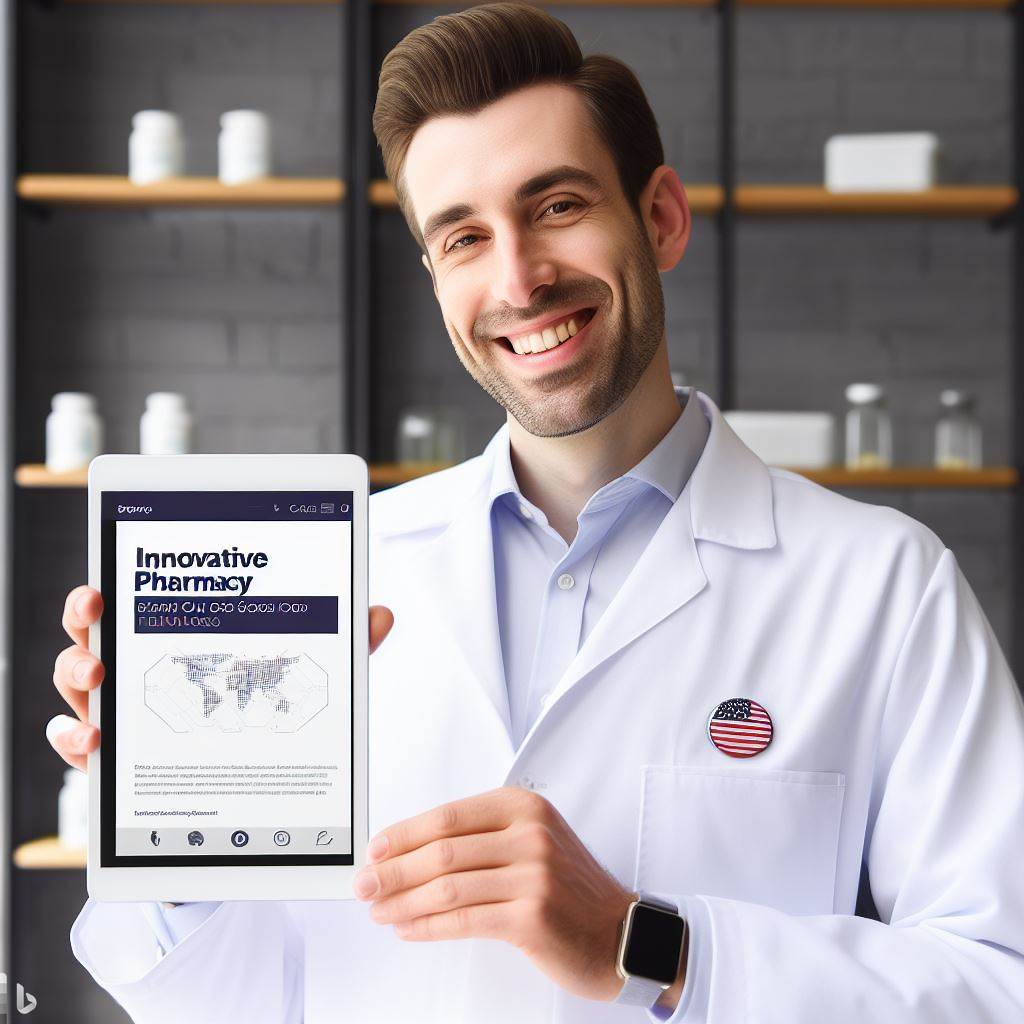Introduction
A. Interprofessional Collaboration
Interprofessional collaboration is the practice of healthcare professionals from different fields working together seamlessly to provide patient-centered care.
B. Importance of Pharmacist-Doctor Collaboration
The partnership between pharmacists and doctors is paramount in ensuring patient safety, optimal medication management, and improved health outcomes.
C. Preview of Main Points
In this blog post, we’ll explore:
- Benefits of pharmacist-doctor collaboration.
- Enhancing medication management through joint efforts.
- Strategies for effective communication between these healthcare professionals.
- Real-life success stories showcasing the impact of collaboration.
- The future of interprofessional teamwork in healthcare.
The Role of Pharmacists
A. The responsibilities and expertise of pharmacists
- Pharmacists are responsible for dispensing medications accurately and safely to patients.
- They analyze medication orders and ensure proper dosages and interactions.
- Pharmacists also provide guidance on the proper use and administration of medications.
- They have extensive knowledge of drug interactions, adverse effects, and contraindications.
- Pharmacists play a crucial role in preventing medication errors and ensuring patient safety.
B. The importance of pharmacists in patient care
- Pharmacists work closely with doctors to optimize medication therapy for patients.
- They collaborate to develop appropriate treatment plans based on patients’ medical conditions.
- Pharmacists play a vital role in managing chronic diseases through medication counseling.
- They help patients understand their medications, potential side effects, and adherence strategies.
- Pharmacists promote the safe and effective use of medications to enhance patient outcomes.
C. Examples of how pharmacists contribute to interprofessional collaboration
- Pharmacists participate in interdisciplinary rounds with doctors, nurses, and other healthcare professionals.
- They provide valuable insights regarding medication selection, dosing, and potential interactions.
- Pharmacists assist in medication reconciliation to ensure continuity of care during transitions.
- They collaborate with doctors to identify and resolve medication-related problems.
- Pharmacists play a role in interdisciplinary committees focused on improving patient safety and quality of care.
Pharmacists’ expertise and responsibilities make them essential members of the healthcare team.
They contribute to interprofessional collaboration by bridging the gap between medicine and pharmacy.
Their knowledge in pharmacology and therapeutics is invaluable in optimizing patient outcomes.
Pharmacists not only ensure the safe and effective use of medications but also improve medication adherence.
They play a crucial role in minimizing adverse events and improving medication-related patient education.
By actively engaging with doctors and other healthcare professionals, pharmacists enhance healthcare delivery.
Their contributions ultimately result in better patient care and improved medication management.
Essentially, pharmacists are experts in medication therapy and play a vital role in interprofessional collaboration.
Their responsibilities, knowledge, and expertise are crucial in optimizing patient outcomes and ensuring medication safety.
Pharmacists work alongside doctors and other healthcare professionals to provide comprehensive patient care.
Interdisciplinary collaboration involving pharmacists leads to improved healthcare delivery and enhanced patient satisfaction.
The Role of Doctors
A. Key responsibilities and duties of doctors
- Diagnosing and treating illnesses and injuries
- Prescribing medications and treatment plans
- Performing medical procedures and surgeries
- Providing preventive care and health education to patients
- Collaborating with other healthcare professionals for better patient outcomes
B. The significance of doctors in healthcare settings
- Doctors are primary caregivers who play a crucial role in providing medical expertise and guidance
- They are responsible for managing complex medical conditions and coordinating patient care
- Doctors ensure accurate diagnoses, appropriate treatments, and patient safety
- They act as leaders, guiding healthcare teams and making critical decisions in challenging situations
- Doctors promote patient trust, empathy, and confidence in the healthcare system
C. How doctors can actively engage in collaborative efforts with pharmacists
- Establishing open lines of communication and fostering a culture of collaboration
- Involve pharmacists in treatment planning and medication management discussions
- Consulting pharmacists for medication reviews, potential drug interactions, and adverse effects
- Collaborating on patient education initiatives to enhance medication adherence and safety
- Jointly participating in clinical rounds, interdisciplinary meetings, and case discussions
Doctors can greatly benefit from interprofessional collaboration with pharmacists in several ways:
- Enhanced medication management: Pharmacists provide valuable insights on appropriate dosages, potential drug interactions, and medication appropriateness.
- Improved patient safety: Collaboration ensures thorough medication reconciliations, reduces adverse drug reactions, and prevents medication errors.
- Optimized treatment outcomes: Pharmacists can contribute medication expertise, monitor patient responses, and recommend adjustments for improved effectiveness.
- Efficient resource utilization: Collaborative efforts enable rational drug therapy choices, cost-effective options, and judicious resource allocation.
- Promotion of evidence-based practice: Doctors can benefit from pharmacists’ knowledge of the latest research, guidelines, and therapeutic advancements.
In summary, doctors hold significant responsibilities in healthcare settings and serve as leaders in patient care.
Actively engaging in collaborative efforts with pharmacists can greatly enhance patient outcomes, improve medication management, and promote interdisciplinary teamwork.
By valuing pharmacists’ expertise and involving them in decision-making processes, doctors can ensure comprehensive and patient-centered care.
Read: Technology‘s Role in the Modern American Medical Practice
Benefits of Interprofessional Collaboration
A. Improved patient outcomes as a result of collaboration
- Collaboration between pharmacists and doctors leads to better patient outcomes.
- By working together, healthcare professionals can ensure proper medication management.
- Patients experience fewer medication errors and adverse drug events due to collaboration.
- Enhanced communication between pharmacists and doctors improves treatment plans.
- Collaborative decision-making leads to more personalized and effective patient care.
B. The impact of collaboration on medication management and adherence
- Interprofessional collaboration enhances medication management processes.
- Pharmacists help doctors identify drug interactions and optimize medication regimens.
- Doctors and pharmacists work together to address medication non-adherence issues.
- Collaboration supports patient education on proper medication usage and potential side effects.
- Medication reconciliation is more accurate and thorough when healthcare professionals collaborate.
C. How interprofessional collaboration benefits healthcare systems and providers
- Collaboration improves healthcare efficiency, leading to cost savings for healthcare systems.
- Reduced hospital readmissions and improved patient satisfaction are outcomes of collaboration.
- Collaboration enables healthcare professionals to identify and resolve medication-related problems more effectively.
- Pharmacists and doctors can share knowledge and learn from each other through collaboration.
- Collaboration promotes a multidisciplinary approach, resulting in holistic patient care.
In a nutshell, interprofessional collaboration between pharmacists and doctors brings numerous benefits to both patients and the healthcare system.
Improved patient outcomes, enhanced medication management and adherence, and overall system efficiency are among the advantages.
By working together, pharmacists and doctors can provide more effective and personalized care, minimizing medication errors and adverse events.
Collaboration also allows healthcare professionals to address medication non-adherence issues and educate patients on proper medication usage.
Moreover, the sharing of knowledge and expertise between pharmacists and doctors fosters continuous learning and development.
Ultimately, interprofessional collaboration strengthens healthcare systems and improves the quality of care provided to patients.
Read: Navigating Health Insurance and Billing for U.S. Doctors

Barriers to Interprofessional Collaboration
A. Common challenges faced in collaborative teamwork
- Lack of communication among team members.
- Differences in professional cultures and values.
- Conflicts arising from power dynamics and professional hierarchies.
- Unequal distribution of workload and responsibilities.
- Inadequate understanding and appreciation of each other’s roles and expertise.
B. Potential barriers between pharmacists and doctors
- Limited interaction and lack of shared decision-making processes.
- Misunderstandings regarding the scope of practice and responsibilities of each profession.
- Differing opinions on treatment plans and medication recommendations.
- Stereotypes and preconceived notions about each other’s roles and capabilities.
- Poor knowledge of each other’s education and training.
C. Strategies to overcome these obstacles and promote collaboration
- Establish open and effective communication channels for all team members.
- Encourage regular team meetings and case discussions to enhance understanding and trust.
- Develop shared guidelines and protocols to clarify roles and responsibilities of pharmacists and doctors.
- Implement interprofessional education and training programs to increase awareness and respect for each other’s expertise.
- Promote a culture of mutual respect and recognition of contributions from all team members.
- Create opportunities for shadowing and joint projects to foster closer collaboration.
- Utilize technology platforms that facilitate interprofessional communication and information sharing.
- Address power imbalances through transparent decision-making processes and shared leadership.
- Encourage feedback and constructive discussions to address conflicts and resolve differences in a respectful manner.
- Support research and evidence-based practice initiatives that demonstrate the value of interprofessional collaboration.
To sum it up, interprofessional collaboration between pharmacists and doctors can be hindered by various barriers.
These barriers may include lack of communication, differences in professional cultures, conflicting opinions, and stereotypes.
Yet, effective collaboration and improved patient care are attainable through strategies like open communication, shared guidelines, interprofessional education, and a culture of respect.
It is crucial for healthcare professionals to embrace teamwork and value each other’s expertise in order to provide the best possible care for patients.
Transform Your Career Today
Unlock a personalized career strategy that drives real results. Get tailored advice and a roadmap designed just for you.
Start NowRead: The Importance of Continued Medical Education (CME) in the U.S.
Gain More Insights: Tips for Managing Stress as a Home Health Aide
Successful Examples of Pharmacists and Doctors Collaboration
A. Real-life examples of successful collaborations between pharmacists and doctors
- In a community health clinic, a pharmacist and a doctor collaborate to provide comprehensive medication management to diabetic patients, resulting in improved adherence and better glycemic control.
- At a hospital, a pharmacist and a doctor work together to develop antimicrobial stewardship programs, leading to a reduction in hospital-acquired infections and improved patient outcomes.
- In an outpatient setting, a pharmacist and a doctor partner to implement a chronic disease management program, resulting in decreased hospital readmissions and better patient satisfaction.
B. Innovative models or programs that foster teamwork between pharmacists and doctors
- Collaborative Drug Therapy Management (CDTM) allows pharmacists to work closely with doctors in prescribing, adjusting, and monitoring medication therapy, ensuring optimal patient care.
- Pharmacist-led medication reconciliation programs aim to improve patient safety by partnering with doctors to accurately reconcile medications across transitions of care.
- Interdisciplinary rounds, where pharmacists and doctors actively discuss patient cases and collaborate on decision-making, enhance communication and promote collaborative care.
C. Positive outcomes achieved through collaborative efforts between pharmacists and doctors
- Enhanced patient safety: Through effective collaboration, pharmacists and doctors can identify and prevent medication-related errors, reducing adverse drug events.
- Improved medication adherence: Joint efforts by pharmacists and doctors in patient education and counseling can enhance medication understanding and adherence, leading to better treatment outcomes.
- Optimized medication therapy: Collaboration allows for shared decision-making on medication selection, dosing, and monitoring, resulting in personalized and effective treatment plans.
- Cost-effective healthcare: Pharmacists and doctors collaborating to optimize medication therapy can reduce medication-related hospitalizations and overall healthcare costs.
- Patient-centered care: By working together, pharmacists and doctors can ensure that patients’ preferences, values, and goals are considered in the healthcare decision-making process.
In review, successful collaborations between pharmacists and doctors have been exemplified in various real-life scenarios, showcasing their ability to enhance patient care and contribute to positive outcomes.
Innovative models and programs that support teamwork between pharmacists and doctors further strengthen the collaborative efforts.
Through effective collaboration, patients can experience improved medication safety, adherence, and optimized therapy, resulting in cost-effective and patient-centered care.
Read: Telemedicine: The Future of Healthcare in the USA?
See Related Content: Sleep Studies: Role of the Technologist
Strategies to Enhance Interprofessional Collaboration
A. Tips to Improve Collaboration for Pharmacists and Doctors
- Create regular opportunities for face-to-face meetings to foster personal connections and build relationships.
- Establish clear roles, responsibilities, and expectations for each professional within the collaborative team.
- Encourage active listening and seek input from all team members to promote equal participation.
- Utilize transparent and efficient communication channels to ensure timely information sharing.
- Develop shared goals and objectives to align the efforts of pharmacists and doctors towards patient-centered care.
- Embrace a culture of mutual respect, recognizing and valuing the expertise and perspectives of each professional.
- Promote a supportive work environment that allows for open discussions and constructive feedback.
B. Importance of Communication, Respect, and Trust
Effective communication forms the foundation of successful interprofessional collaboration between pharmacists and doctors.
Clear and concise communication ensures that vital patient information is accurately conveyed and understood by all team members.
Mutual respect is crucial in fostering collaborative relationships.
Pharmacists and doctors must appreciate each other’s expertise and contributions, working together as equals to provide the best possible patient care.
Trust is an essential element in interprofessional collaboration.
Trust enables pharmacists and doctors to rely on each other’s decisions and recommendations, allowing for smoother workflow and improved patient outcomes.
C. Resources and Training Programs for Interprofessional Teamwork
To support interprofessional teamwork, there are various resources and training programs available:
- Interprofessional Education (IPE) programs provide opportunities for pharmacists and doctors to learn together, enhancing their understanding of each other’s roles.
- Online platforms and forums offer spaces for healthcare professionals to connect, share knowledge, and collaborate remotely.
- Team-building workshops and simulations facilitate experiential learning, encouraging effective collaboration skills.
- Continuing education courses focused on interprofessional collaboration can help enhance the knowledge and competencies of pharmacists and doctors.
- Professional organizations and associations often provide resources, guidelines, and frameworks specifically aimed at fostering interprofessional collaboration.
Basically, improving interprofessional collaboration between pharmacists and doctors requires a multifaceted approach.
Healthcare teams can enhance collaboration through strategies like frequent communication, mutual respect, and utilizing available resources and training programs, ultimately benefiting patient care.
Conclusion
A. Recap the Main Points
In this blog section, we explored the importance of interprofessional collaboration between pharmacists and doctors.
We discussed how this collaboration enhances patient safety, medication adherence, therapy optimization, cost-effectiveness, and patient-centered care.
B. Reiterate the Significance of Collaboration
The collaboration between pharmacists and doctors is indispensable in delivering comprehensive, high-quality healthcare.
Their combined expertise leads to better patient outcomes and safety.
C. Encouraging Collaboration for Improved Patient Care
To healthcare professionals, we encourage seeking and embracing interprofessional collaboration actively.
It’s not only an effective approach but a responsibility in providing the best care and improving the health of the patients they serve.
Collaboration can bridge gaps, enrich knowledge, and ensure holistic patient care.
By working together, pharmacists and doctors can continue to shape a brighter and healthier future for healthcare.
[E-Books for Sale]
The Big Book of 500 High-Paying Jobs in America: Unlock Your Earning Potential
$19.99 • 500 High-Paying Jobs • 330 pages
Explore 500 high-paying jobs in America and learn how to boost your career, earn more, and achieve success!
See All 500 High-Paying Jobs of this E-Book
1001 Professions Without a Degree: High-Paying American Jobs You Can Start Now
$19.99 • 1001 Professions Without a Degree • 174 pages
Discover 1001 high-paying jobs without a degree! Unlock career tips, skills, and success strategies for just $19.99!




